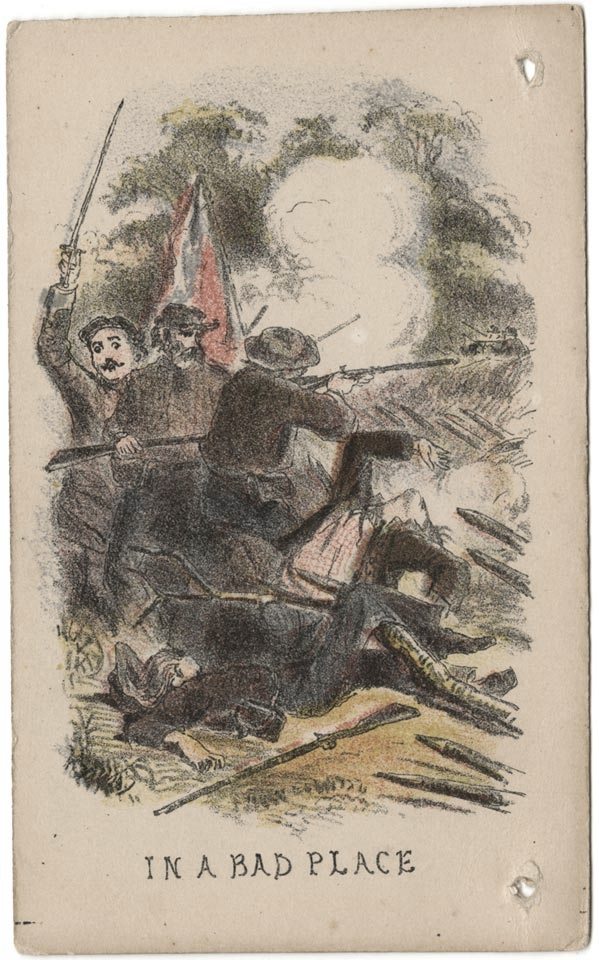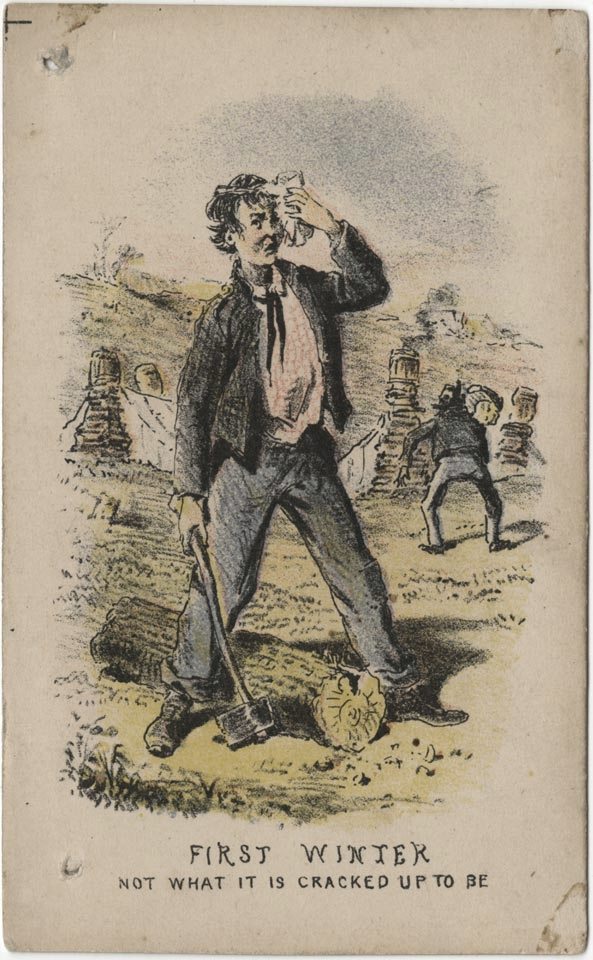Life Scenes of a Confederate Soldier
C1: 011
ca.1865
12 lithographic cards, 2 x 3 inches
The mild pastels of these lithographic novelty cards belie their content, which is uncharacteristically downbeat for Southern wartime images. They feature Dixie caricatures populating scenes of defeat and despair, such as a man in gray—who appears to be lonesome, cold, and hungry—reminiscing about the “good times” of 1861. Most of these “life scenes” are not historically specific. “A Flank Movement” visually puns military action, showing a hungry soldier armed with a stiletto stalking an oblivious pig. “Heroes Still,” apparently a post-War scene, or one anticipating the fruits of pursuing a lost cause, shows humbled white Southerners tilling their own fields. Other scenes include “In a Bad Place,” “First Winter,” “Homesick,” “In the Trenches,” “The Vidette,” “The Camp Darkey,” “Following Stonewall,” and a sea battle captioned “No. 290.” The cards were originally held together into a dainty, homemade fascicle, fashioned from sackcloth, which includes the handwritten title of the collection along with an almost indecipherable name written in pencil: “Hope Stewart.”
Provenance:
Donated, 1951
References:
Six of the images were reproduced in Cavalcade (winter, 1951).

C1: 011 Life Scenes of a Confederate Soldier 
C1: 011 Life Scenes of a Confederate Soldier
Life Scenes of a Confederate Soldier Read More »

